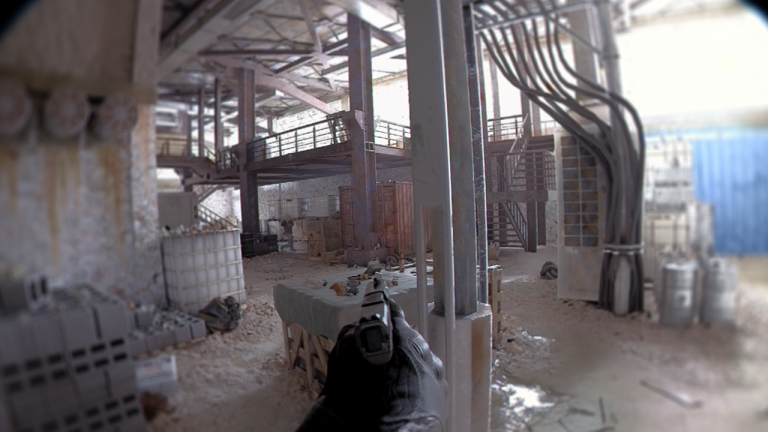A Deep Dive into Game Design, Literature, and Cinematic Inspirations
The craft of world-building is as ancient as storytelling itself. From the mythical landscapes of Homer’s “Odyssey” to the intricate realms of Tolkien’s Middle-earth, authors have long captivated audiences by crafting immersive worlds that serve as backdrops to epic tales. This age-old tradition found new life in the world of Dungeons & Dragons (D&D), a game that not only allows individuals to navigate these fantastical settings but also invites them to become co-creators, shaping and molding universes of their own design.
At its heart, D&D is more than just a game of chance and strategy; it’s a narrative experience, one where the depth and richness of the world play a pivotal role in engaging its participants. Every mountain range, bustling city, hidden cult, and arcane ritual adds layers to the story, making the adventures memorable and the stakes palpably real. But what’s fascinating is how this modern tabletop game, with its dice and character sheets, intersects with the broader tapestry of literature and film, drawing inspiration from, and in turn inspiring, these mediums.
For both seasoned Dungeon Masters and budding storytellers, understanding the symbiotic relationship between D&D, literature, and cinema can provide invaluable insights. Whether you’re aiming to craft a haunting gothic horror setting or a sprawling epic reminiscent of classic high fantasy, recognizing and harnessing the elements borrowed from books and films can elevate your world-building to unparalleled heights. Join us as we journey through this intersection of game design, literature, and cinematic artistry.
The Pillars of D&D World-building
In the realm of Dungeons & Dragons, the world itself is as pivotal a character as any hero or villain. It’s the canvas upon which epic tales unfold, setting the tone, challenges, and opportunities for the adventurers. Mastering world-building requires a keen understanding of three foundational pillars that, when intertwined, breathe life into the setting. Delving into these key areas allows Dungeon Masters to paint vibrant, immersive, and compelling backdrops that players will long remember.
Geography and Topography: Landscapes & Wonders
From treacherous mountain passes to tranquil meadows, the physical lay of the land determines both the challenges and wonders players encounter. The geographical elements don’t just set the scene; they play a strategic role, influencing travel, battles, and the unfolding narrative.
Cultures and Civilizations: Societies & Secrets
Beyond mere geography, the heart of any D&D world lies in its inhabitants and their ways of life. Crafting diverse cultures, with distinct customs and intricate political machinations, not only adds depth but also seeds potential conflicts, alliances, and quests for players to engage with.
Magic and Mythos: Arcana & Creatures
Magic pulses through the veins of most D&D worlds. It’s a force that can shape destinies, topple empires, or birth legends. Alongside it, mythological creatures, from majestic dragons to elusive fae, populate the lands, seas, and skies. This element introduces unpredictability, awe, and often, a touch of the unknown to the narrative.
Together, these pillars form the bedrock of any memorable D&D setting. By interweaving geography with culture and infusing them with magic, Dungeon Masters craft worlds that are not just backdrops, but dynamic entities that evolve, challenge, and inspire.
Drawing Parallels with Literature
Literature, in its varied forms, has always been a mirror to humanity, capturing our dreams, fears, and aspirations. Dungeons & Dragons, though a game at its core, borrows heavily from this rich tapestry of tales that have come before. Both mediums, despite their differing formats, seek to tell compelling stories, and thus it’s no surprise that they often tread similar narrative ground. By understanding these parallels, Dungeon Masters can enhance the depth and resonance of their campaigns, weaving tales that echo with the timeless allure of classic stories.
Shared Themes: Echoes of Timeless Tales
Many of the themes that pervade classic literature find their way into the heart of D&D campaigns. The hero’s journey, a narrative arc familiar from epics like “The Odyssey” or more modern tales like “The Lord of the Rings”, can be mirrored in a character’s progression from a novice adventurer to a world-saving champion. Redemption arcs, moral dilemmas, and quests for forbidden knowledge – themes prevalent in works from Shakespeare to Mary Shelley’s “Frankenstein” – also find echoes in the decisions and challenges faced by D&D players.
Character Archetypes: From Pages to Tabletops
Literary figures, with their distinct personalities and trajectories, serve as inspiration for D&D character classes and backgrounds. The wise old mentor, akin to Merlin or Gandalf, could shape a wise wizard or sagely cleric. The tragic hero, tormented by fate like Oedipus or Hamlet, might find a reflection in a cursed warlock or a vengeance-driven paladin. Recognizing these archetypes allows for richer character development and more nuanced interactions.
Narrative Structures: Modular Tales & Epic Sagas
Classic novels often follow a structured plot progression, guiding readers through a series of climaxes and resolutions. Similarly, D&D adventures, while modular in design, can follow familiar narrative beats. Just as readers anticipate the trials of a hero or the resolution of a central conflict in a novel, players too await the pivotal confrontations and revelations in their D&D journey. By adapting the pacing, tension, and structure of beloved novels, Dungeon Masters can craft sessions that resonate with the rhythm of classic storytelling.
In essence, literature and D&D are two sides of the same storytelling coin. One offers tales immortalized in ink, while the other breathes life into stories through collaborative imagination. By drawing from the annals of classic literature, D&D campaigns can achieve a depth and gravitas that leaves an indelible mark on the players’ memories.
Influence of Film on D&D World-building
The world of cinema, with its sweeping visuals, heart-pounding soundtracks, and unforgettable moments, offers a vast trove of inspiration for the Dungeons & Dragons universe. Film brings stories to life in a multi-sensory fashion, leaving audiences in awe of stunning landscapes, intricate cities, and dramatic confrontations. For a Dungeon Master, the silver screen becomes a gold mine, providing a rich palette to paint their narratives and craft a truly cinematic experience at the game table.
Visual Inspirations: From Screen to Scene
Cinematography captures the essence of a story’s setting. The sweeping vistas of Middle-earth in “The Lord of the Rings,” the dystopian cityscapes of “Blade Runner,” or the ethereal beauty of “Avatar’s” Pandora serve as invaluable references for D&D world-building. Set designs, too, from the grandeur of “Game of Thrones” castles to the intricate details of Diagon Alley in “Harry Potter,” can guide Dungeon Masters in visualizing towns, dungeons, and magical realms. These visuals not only set the mood but provide tangible touchpoints that DMs can describe to immerse their players fully.
Adapting Cinematic Tropes: Drama at the Roll of a Die
Every film lover has a collection of scenes etched into their memory – the unexpected twist, the last-minute rescue, the heart-wrenching betrayal. Such moments, when adapted to D&D, can elevate a session from memorable to legendary. Think of the tension of a “Mission Impossible” heist or the intrigue of a “Godfather” negotiation. By drawing from these cinematic tropes, DMs can introduce scenarios that surprise, challenge, and deeply engage their players.
Soundscapes and Music: Setting the Rhythm of Adventure
Music, often dubbed the soul of cinema, plays an integral role in conveying emotions, building tension, or heralding triumphs. Iconic scores, be it the adventurous tones of “Indiana Jones,” the haunting melodies of “Pan’s Labyrinth,” or the epic crescendos of “Gladiator,” can serve as a backdrop to D&D campaigns. By curating playlists or selecting thematic tracks, Dungeon Masters can underscore pivotal moments, making encounters more evocative and battles more visceral.
In a world where storytelling mediums converge, cinema’s influence on D&D is undeniable. As movies transport audiences to distant galaxies, ancient times, or magical realms, so too can D&D sessions, especially when imbued with the cinematic magic that has captivated audiences for over a century. As Dungeon Masters weave their tales, the marriage of filmic elements with traditional storytelling ensures that their worlds shimmer, pulsate, and truly come alive.
Conclusion
World-building, an art as ancient as storytelling itself, remains a dynamic and ever-evolving endeavor. Its roots dig deep into the annals of literature, stretch out to the expanse of cinematic landscapes, and find new horizons in the imaginative realms of games like Dungeons & Dragons. With each era, new stories emerge, and with them, fresh inspirations and techniques that enrich this age-old craft. In this vast mosaic of influences, the wisdom lies not in rigid adherence to a single source but in the ability to adapt, mix, and transform.
Dungeon Masters, the architects of these fantastical realms, are tasked with a challenge and blessed with an opportunity. The challenge is to navigate the vast sea of established lore, classic narratives, and iconic moments, ensuring their tales resonate with familiarity. The opportunity, however, is to infuse their unique voice, perspective, and creativity into these stories. While the scaffolding might borrow from Tolkien, the ambiance from Spielberg, or the plot twist from a Hitchcock thriller, the soul of the story remains distinctively their own.
In the end, the magic of D&D lies in its collaborative nature. The world is but a canvas, and while a Dungeon Master might sketch the outlines and paint the broad strokes, it’s the players who fill in the details, breathe life into characters, and chart the course of adventures. By blending originality with time-honored tropes, DMs can craft experiences that are both comfortingly familiar and exhilaratingly new. As storytellers continue to explore, adapt, and innovate, the world of D&D promises tales that are, in every sense, legendary.
The post Mastering the Craft of World-building in DND appeared first on LitRPG Reads.












